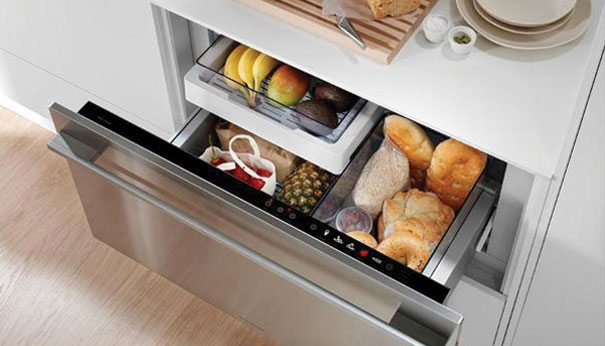You could try wine coolers*. Wine likes temperatures around 50F, so they should all be around the temperature you want, and the nicer ones will have accurate thermostats too.
Mini-fridges could work - if their warmest temperature setting is warm enough. But be careful: they tend to have very bad circulation. On normal fridge temperature settings, a lot of them range from frozen on one end to too warm on the other end. If you set it warmer, you might end up with a range from too cold to room temperature. If all you're storing in it is roots, this is totally fine, but it could cause problems if anything is sensitive. So your mileage may vary, and it can be tough to tell without buying and trying.
That said, you don't want temperatures that cold for tomatoes. Storing them at room temperature is fine and generally recommended, unless your room temperature is excessively hot. (For example, Harold McGee says this in On Food and Cooking, and that temperatures below 55F will mess with the texture.)
Most herbs also do pretty well in the refrigerator, wrapped loosely with paper towels inside an open bag. Things like basil that like warm weather do better at room temperature, with cut ends in water, like flowers. (You can also do this in the fridge, if you're having problems with them drying out too much - you'll want to cover the "bouquet" loosely with a bag still.) See How to Store Fresh Herbs for more.
The things that you might want to store at intermediate temperatures are root vegetables - this is why they were traditionally stored in cellars (like wine). Potatoes, for example, have an ideal storage temperature around 45-50F. But it's not a huge concern; their storage lifetime is pretty long at room temperature. Unless you find them sprouting before you use them, there's not much to worry about!
* Note that I said wine cooler not wine cellar - in general the ones marketed as cellars are more expensive, but there are ones marketed as coolers that are back down closer to the minifridge price range. Rumtscho's additional suggestion of drink refrigerators is probably good too - though quickly searching, I didn't find ones that were any cheaper than the cheap wine coolers.


